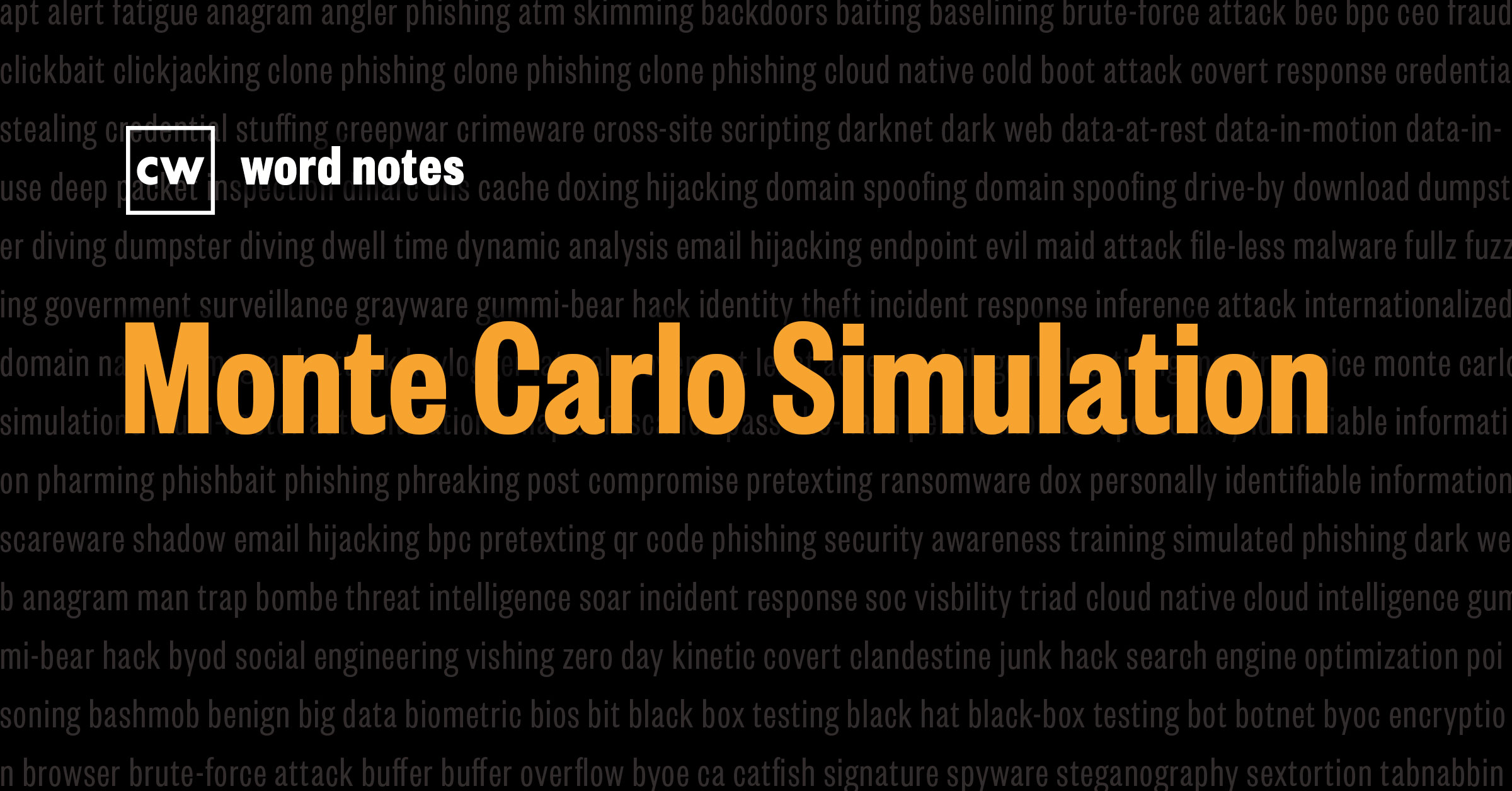
Monte Carlo Simulation (noun)
Rick Howard: The word is: Monte Carlo Simulation.
Rick Howard: Spelled: Monte Carlo is in the city located in Monaco, and Simulation is in a mathematical model.
Rick Howard: Definition: a probability simulation technique used to understand the impact of risk and uncertainty in complex problems.
Rick Howard: Example sentence: The Monte Carlo method is used in almost every quantitative subject of study: physical sciences, engineering, statistics, finance and computing, including machine learning and graphics.
Rick Howard: Context: it is a mathematical technique used to understand the impact of risk and uncertainty and prediction in forecasting models and represents a broad class of computational algorithms that rely on repeated random sampling to obtain numerical results. With this method, scientists were able to provide real answers to the most difficult problems, like defeating the Enigma encryption machine in World War II and finding a lost, sunken nuclear submarine that was the basis for the movie The Hunt for Red October. Today, everybody who has a spreadsheet can run their own Monte Carlo simulations, they furnish decision makers with a range of possible outcomes and the probabilities they will occur for any choice of action.
Rick Howard: Origin: During World War II, Dr. Stanislav Ulam was a key scientist who worked on the Manhattan Project, the project that developed the first atomic bomb in 1945. He contracted viral encephalitis and during his convalescence played a lot of Canfield Solitaire with a deck of cards on his hospital bed. He wondered if he could mathematically predict winning hands out of a random 52 card deck. After several unsuccessful tries at developing a mathematical shortcut, he decided to simulate the game using the brand new Electronic Numerical Integrator and Computer, or ENIAC. He programmed the computer to play thousands of games and counted winning versus losing hands. In this manner, he could predict with certainty the probability of a winning hand for any randomly sorted deck of cards. Working with his colleague, Dr. John von Neumann, he applied the solitaire solution to the problem of neutron multiplication in fission devices. Instead of the differential equations they were trying to use, they simulated the neutron-velocity spectrum and ran it on the ENIAC many times. It is unclear who exactly coined the phrase "Monte Carlo Simulation" among the Los Alamos scientists, Dr. Ulam, Dr. Von Neumann, or Dr. Nicholas Metropolis. But it had something to do with the fact that Dr. Ulam's uncle like to frequent the casinos in Monte Carlo and the name stuck.
Rick Howard: Nerd reference: In the Marvel Studios classic Avengers: Infinity War, released in 2018, Iron Man, played by Robert Downey Jr., Star Lord played by Chris Pratt, and Doctor Strange, played by Benedict Cumberbatch, discussed a plan to defeat Thanos. Doctor Strange uses the Time Stone to move forward in time to view all of the potential outcomes of the upcoming battle. By doing this, he becomes the first superhero to use a Monte Carlo Simulation in film.
Robert Downey, Jr.: Strange, we alright?
Robert Downey, Jr.: You're back. You're alright.
Tom Holland: Hey, what was that?
Benedict Cumberbatch: I went forward in time to view alternate futures. To see all the possible outcomes of the coming conflict.
Chris Pratt: How many did you see?
Benedict Cumberbatch: 14 million, six hundred and five.
Robert Downey, Jr.: How many'd we win?
Benedict Cumberbatch: One.

